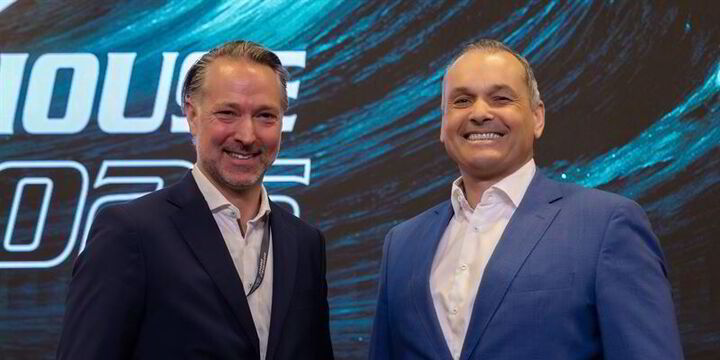Wartsila Develops World's First Floating Ammonia-to-Hydrogen Cracker
Key Ideas
- Wartsila and Hoegh Evi unveil the world's first floating cracker converting ammonia to hydrogen, with a production capacity of 210,000 tonnes per year.
- The innovative technology enables floating terminals to produce hydrogen at an industrial scale, supporting the European Union's REPower strategy to import renewable hydrogen.
- The modular design of the cracker allows integration into FSRUs and floating hydrogen terminals, addressing challenges in hydrogen storage and transportation for a more resilient energy infrastructure.
- Wartsila reported a significant revenue growth in the first quarter, with a focus on key segments like cruise, ferry, and offshore, and a notable increase in the use of alternative fuels in vessel operations.
Finnish technology company Wartsila, in collaboration with Hoegh Evi, has successfully developed the world's first floating cracker that converts ammonia into hydrogen. This breakthrough technology, constructed in Stord, Norway, marks a significant advancement in the energy transition by enabling floating import terminals to produce hydrogen on an industrial scale from transported ammonia. With a production capacity of 210,000 tonnes per year and flexible ammonia storage options, the partners see this innovation as a game-changer that can unlock the full potential of global value chains for green hydrogen. The modular design of the cracker allows for seamless integration into Floating Storage and Regasification Units (FSRUs) and dedicated floating hydrogen terminals, addressing key challenges in hydrogen storage and transportation while enhancing the flexibility and resilience of the energy infrastructure. The companies believe that such floating infrastructure, in line with the European Union's REPower strategy, can significantly contribute to the goal of importing 10 million tonnes of renewable hydrogen annually by 2030, providing stable baseload energy for hard-to-abate industries. Wartsila's positive financial performance in the first quarter, with increased revenue and a focus on key maritime segments and alternative fuels, reflects a growing demand for sustainable solutions in the shipping industry amidst global trade uncertainties.
Topics
Europe
Revenue Growth
Energy Transition
Alternative Fuels
Renewable Hydrogen
Marine Technology
European Industry
Floating Infrastructure
Ship Capacity
Latest News
